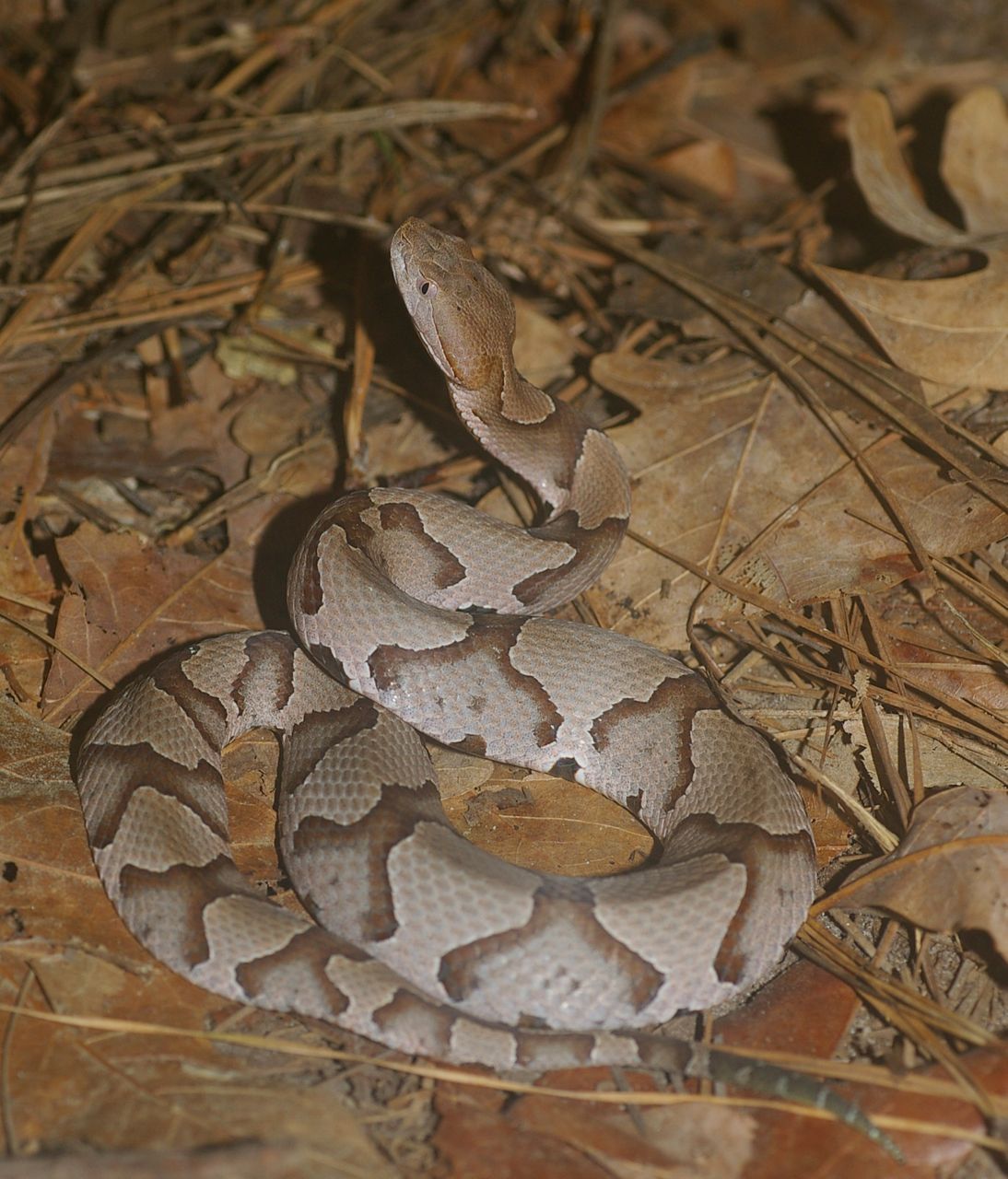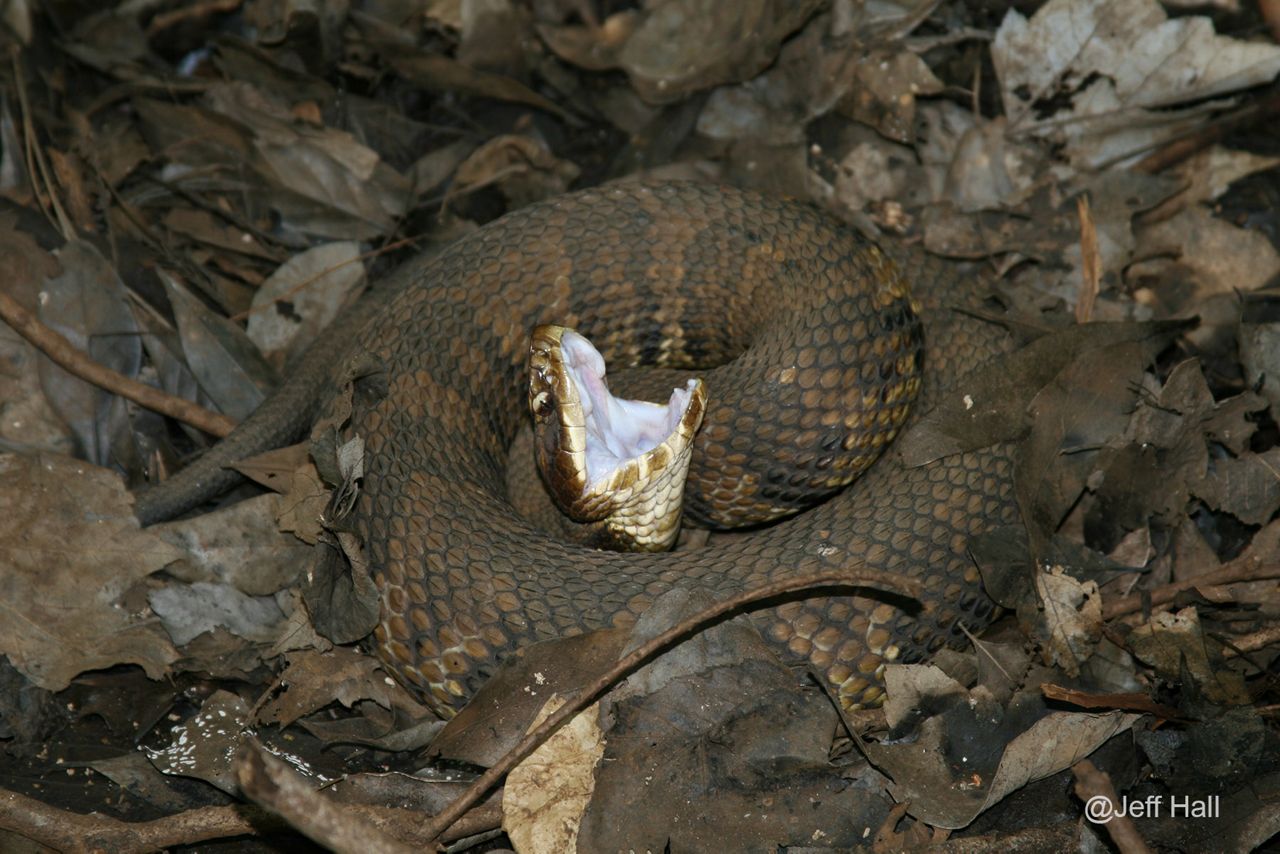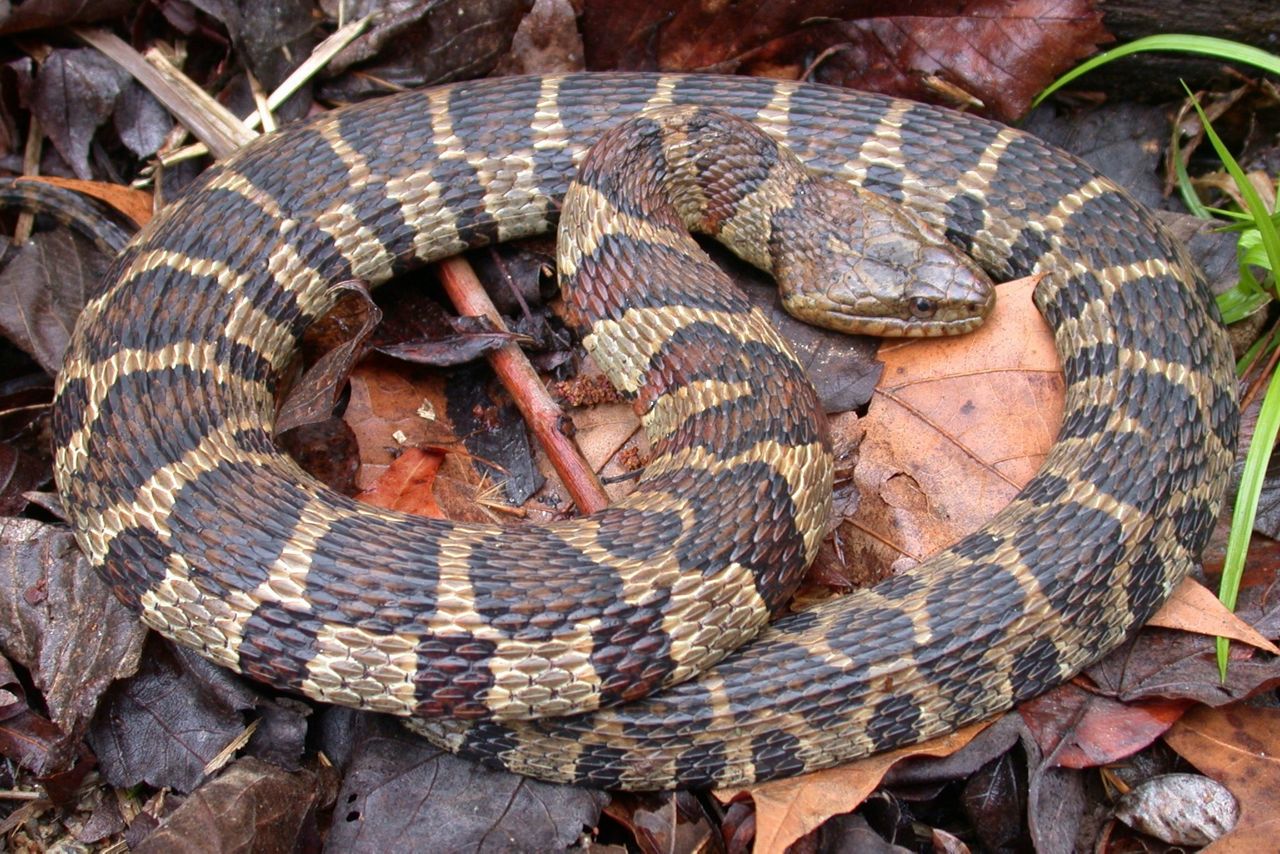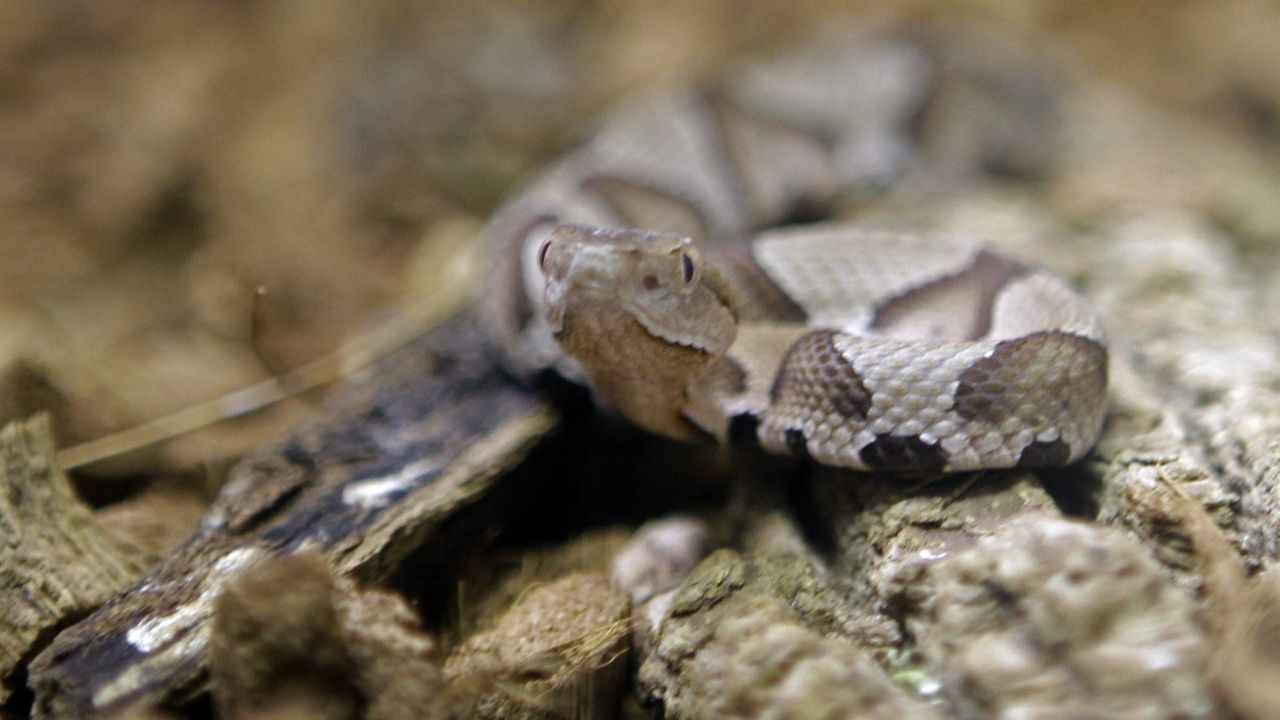Lots of people are scared of snakes. Biologists say that in general, snakes in North Carolina want nothing to do with humans. But they still get a bad rap.
Of the 37 species in the state, six are venomous. Spring is the time of year when they all start to come out, including venomous copperheads and cottonmouths.
“We encourage everyone to know the venomous snakes in your area first,” said Eric Bitler, of Charlotte, who works with The Rattlesnake Conservancy. He also volunteers with the N.C. Snake Identification & Education Facebook group, which has grown to more than 65,000 members.
“Snakes play a really important role in our ecosystem in so many ways. It’s not just that they eat rodents,” he said. “It is important for us to learn to live with these animals.”
“North Carolina is one of the leaders in copperhead bites in the country. A lot of that is because they’re most active when we’re most groggy, that’s early morning and later evening,” Bitler said. But, he said, it is very rare for someone to die from a venomous snakebite.
The Facebook group is one way Bitler and the other moderators on the site try to help people learn to identify snakes and how to exist in an environment with snakes. During the busy spring season, there can be hundreds of photos posted each day of snakes people are trying to identify.
“We’re not out there turning everyone into a snake lover, we want people to be able to coexist,” he said. “If someone says, ‘I still don’t like snakes, but I let them be,’ that’s a win.”
There are six types of venomous snakes in North Carolina, and four of those are listed as endangered or of special concern, according to the North Carolina Wildlife Resources Commission.

The most common venomous snakes in North Carolina are copperheads and cottonmouths, also known as water moccasins.
Copperheads are identified by the “Hershey’s Kiss” pattern along their sides, according to WRC. Copperheads are brown, gray-brown, tan or more pink, with an hourglass pattern of darker brown down the back.
Copperheads are found statewide.
“For a copperhead, they have a very distinct pattern that they’re born with. They’re not a species of snake that changes color or changes pattern as they mature,” Bitler said.
“They have very clean edges versus a cottonmouth that has more of a pixelated or broken edge with a very similar pattern,” he said.
Cottonmouths are found in the Sandhills and Coastal Plain regions of North Carolina, he said.
North Carolina has three rattlesnake species, and all of them are protected under state law.
The eastern diamondback rattlesnake is listed by the state as endangered. They are only found in the southeast corner of North Carolina. They are the largest rattlesnake species and can grow to more than six feet long.
Timber rattlesnakes are now found mostly on the coast and in the mountains, Bitler said.

“Timber rattlesnakes historically ranged across the entirety of the state,” he said, but habitat loss and growing urban environments have pushed most of them out of the Piedmont region.
Pigmy rattlesnakes are the smallest rattlesnakes in North Carolina, growing to about 26 inches, according to N.C. Cooperative Extension. They are only found in the Sandhills and Coastal Plain regions.
The most elusive venomous snake in North Carolina is the eastern coral snake, known for its red, black and yellow bands. The snakes are very rare and in North Carolina they have only been found in the southeastern corner of the state, according to the WRC.
There are more than 30 harmless snake species that call North Carolina home. There’s the small, docile ring-necked snake that grows to be just 13 inches, all the way up to the eastern king snake, which can grow to more than five feet long.
Because of their camouflage pattern, some snakes like the northern water snake can be quickly confused with their venomous distant cousins.
Northern water snakes are found in rivers and waterways across much of the state, though not in the Sandhills and the southern Coastal Plain.

“The northern water snakes, the first part of their body has vertical striping down the body, it almost looks like bands, and then it becomes more broken, blotches as it goes down the length of the snake,” Bitler said.
“Cottonmouths have a more stubby, shorter tail structure, versus water snakes that have a longer, thinner tail structure,” he said. But if you can’t tell the difference, it’s best to admire a snake from a safe distance.
“The northern water snake is often mistaken for the cottonmouth because of its dark coloration and habitat preferences. Distinctly banded individuals are sometimes mistakenly identified as copperheads or cottonmouths,” according to the WRC.
The same is true for brown water snakes, which live in a similar range as cottonmouths.
“Like most other water snakes, brown water snakes are often mistakenly identified as cottonmouths and killed. When captured, these snakes, like other water snakes, will bite repeatedly and emit a nasty smelling musk from their anal glands,” according to WRC.
Cottonmouths are the only venomous aquatic snake in North Carolina and they live mostly in the Coastal Plain region. In much of the Piedmont and points west, odds are that snake in the water is not venomous.
A common refrain on the Snake ID Facebook page if someone finds an unwanted snake in their yard is to give them a “gentle spray with a garden hose.”
For Bitler, it’s all about the environment.
“You need to make your property as uninviting to snakes as possible. There are no commercially available products that do anything, they’re all ‘snake oil.’ If you remove the things snakes need to thrive, which is water source, food source and a place to shelter, you won’t have snakes staying on your property,” Bitler said.
“You may have a snake moving through, just like we drive on the highways, you may have a snake passing through, but if there’s nowhere for them to safely shelter down, find food, find water, they’re not going to stay long,” he said.
Hiring a company to relocate a snake won’t help if you still have the right conditions for a snake to call home. Another one will just move in.
For more random encounters, Bitler said to just let snakes be.
“Chances are, if you give that animal 30 feet and 30 minutes, it will probably be gone and you probably won’t encounter it again,” he said. “If you manage your property well and don’t create habitat for them, you probably won’t have many staying around.”
One of the most common ways people end up getting bit by a venomous snake is when they’re out walking around dawn or dusk.
“A lot of the time we’ll go out to walk the dog wearing flip flops or no shoes at all and it’s dawn and we can barely see because we haven’t woken up yet,” he said. “Just put shoes on and carry a flashlight. That goes a long way to preventing a bite.”









